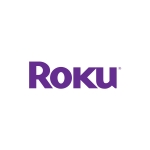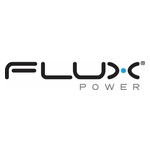Humanoid Robots to Become the Next US-China Battleground, with Price Differentiation and Tiered Applications as Emerging Trends, Says TrendForce
Ms. Peng Chen
Tel: +886-2-8978-6488 ext. 667
pengchen@trendforce.com
Ms. Pinchun Chou
Tel: +886-2-8978-6488 ext.669
pinchunchou@trendforce.com
Governments worldwide are ramping up investments in robotics R&D as labor shortages and rising costs persist. TrendForce reports that China, Japan, the US, South Korea, and Germany have consistently ranked among the top five countries for industrial robot installations and are expected to continue executing over US$13 billion in related projects by 2025. The US boasts a more advanced AI ecosystem, while China is focused on building a robust supply chain. This divergence is expected to drive greater product pricing variations and application diversity in the future.
TrendForce notes that the US government is primarily investing in smart robotics, autonomous systems, space robotics, and military robots. The humanoid robotics sector is led by companies such as Tesla and Boston Dynamics, with initial applications centered on manufacturing, warehousing, and logistics.
Technologically, US firms excel in AI training, including the development of the first vision-language action (VLA) model for high-frequency upper-body control in humanoid robots, the integration of Google Gemini 2.0 to enhance spatial awareness, and collaborations with NVIDIA to improve locomotion stability through reinforcement learning.
Leading US semiconductor firms such as Qualcomm and NVIDIA offer end-to-end solutions with computing power exceeding 150 TOPS. Additionally, high-performance MCUs from Texas Instruments and Analog Devices further solidify the US’s comprehensive AI-driven robotics ecosystem.
China, on the other hand, has identified robotics as a strategic priority in its 14th Five-Year Plan (2021–2025) and has issued various policy directives, including guidelines for innovation in humanoid robotics. The focus has been on developing a self-sufficient supply chain and key components.
Leading Chinese humanoid robot manufacturers include Unitree Robotics, Fourier, and UBTECH, while the “Movement Plane,” which accounts for approximately 55% of a robot’s total cost, has seen strong domestic investment. Chinese firms are actively developing coreless motors, 6D force-torque sensors, and harmonic drives, key components for humanoid robot mobility.
TrendForce points out that Tuopu Group, Sanhua Intelligent Controls, Hengli Hydraulic, Seenpin, and Zhaowei not only serve China’s domestic market but have also entered international supply chains or are undergoing testing with major global players. Furthermore, China is the world’s largest battery producer. As humanoid robots move toward mass production and require higher power efficiency, this advantage is expected to become increasingly critical.
A comparison of core technological specifications of humanoid robots from the US and China reveals that American companies focus on industrial applications, prioritizing payload capacity and battery life, while Chinese manufacturers emphasize versatility and greater degrees of freedom in full-body and hand movements. TrendForce highlights that, much like the current AI competition between high-capital and low-cost approaches, the humanoid robotics sector in the US and China reflects their respective strengths.
Over the next five years, commercial humanoid robots are expected to exhibit significant price gaps and tiered applications, with regional ecosystems fostering localized production and industrial development.
For further details of this press release, including the accompanying tables and figures, please visit: https://www.trendforce.com/presscenter/news/20250224-12481.html.
For additional insights from TrendForce analysts on the latest tech industry news, trends, and forecasts, please visit our blog at https://www.trendforce.com/news/.
About TrendForce (www.trendforce.com)
TrendForce is a global provider of the latest development, insight, and analysis of the technology industry. Having served businesses for over two decades, the company has built up a strong membership base of 500,000 subscribers. TrendForce has established a reputation as an organization that offers insightful and accurate analysis of the technology industry through five major research departments: Semiconductor Research, Display Research, Optoelectronics Research, Green Energy Research, and ICT Applications Research. Founded in Taipei, Taiwan, in 2000, TrendForce has extended its presence in China since 2004 with offices in Shenzhen and Beijing.
View source version on businesswire.com: https://www.businesswire.com/news/home/20250224193887/en/
The US-China humanoid robot showdown is heating up! The US dominates AI & high-end tech, while China masters supply chains & cost efficiency—leading to big price gaps & diverse applications.
 Business wire
Business wire 











Add Comment